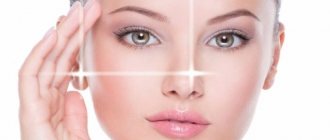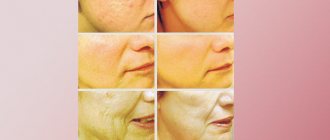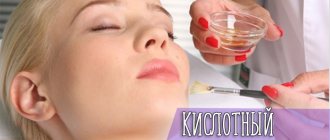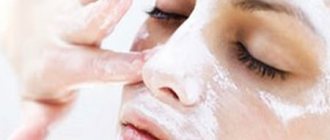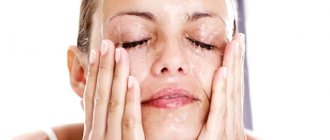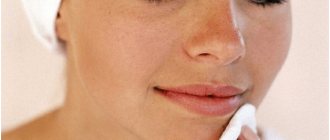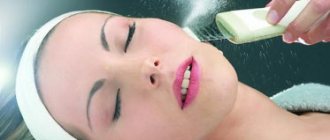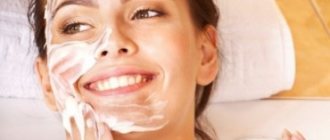The general life cycle of cells is 28 days, after which they die. If the cells are not removed after this, they will clog the pores, which will slow down the flow of nutrients and speed up the aging process. In order to avoid side effects, you need to do peeling, a procedure that removes dead epidermal cells from the surface of the skin. Fruit facial peeling is an effective and modern way to correct defects and age-related changes in the skin.
What is fruit peeling?
Fruit peeling is a cosmetic procedure used to cleanse the surface layers of the skin, activate restoration processes, eliminate acne, fine expression wrinkles, and hyperpigmentation. It is carried out with special fruit acids.
The method is popular mainly among young women, as it has been noted that in people over 45 years of age, the effectiveness of its use is noticeably reduced. TCA peeling, PRXT33 peeling, and salicylic peeling are more suitable for this age. This occurs as a result of the fact that exfoliating superficial peeling is able to cope with fine wrinkles and does not have the proper effect on deep ones.
Contraindications and precautions!
Fruit acids have a fairly strong effect, penetrate deeply into the skin, cleanse it of dead cells and “expose” younger, sensitive layers. These delicate fabrics require special care and protection. When using fruit peels, you need to take some precautions:
- Fruit acids can cause allergies. Therefore, before using the mask, it is better to test it on your wrist.
- Peelings are not recommended for use on delicate, irritated, very sensitive and inflammatory skin.
- Try not to carry out the procedure in the summer, so as not to expose your skin to aggressive sunlight.
- Any skin injuries: scratches, inflammation or irritation are a contraindication to the use of AHA acids.
- It is not recommended to apply fruit masks to faces with a fresh or heavy tan.
- After each session, the dermis needs restoration, which will be provided by herbal decoctions and nourishing creams.
Which fruit acids have the properties necessary for peeling and regeneration?
- Lactic acid. There is often a misconception that this acid can only be found in milk and dairy products. However, its content is high in grapes, apples and even tomatoes. Due to the fact that lactic acid is a component of the natural moisturizing factor, it can be used by people with dry skin types. In addition, as a result of its gentle action on melanin, it has good whitening properties. Lactic acid is also used when performing milk peeling.
- Wine acid. High-quality wine and grapes contain this acid in combination with the active polyphenol resveratrol. This combination has powerful antioxidant properties, protects against ultraviolet rays, and has a rejuvenating effect on the skin of exposed parts of the body (face, hands).
- Glycolic acid. Sources of acid are sugar cane and grapes. The low molecular weight allows it to easily and freely penetrate into the deep layers of the skin and, by acting on melanin, lighten it. Glycolic acid is also used for glycolic peeling.
- Apple acid. This acid is found in apples and, not surprisingly, in tomatoes. It stimulates the activation of processes responsible for the regeneration and restoration of the skin after peeling.
- Lemon acid. All citrus fruits, especially lemons, are rich in this acid. It has a weak antiseptic effect, which helps protect the skin from the action of bacterial and viral agents. Natural antioxidant – rids the body of free radicals.
How did he appear
Peeling, designed to cleanse the skin, appeared in ancient times on the territory of modern Rome. Back then, women performed similar procedures with grape and lemon juices. You can often hear an interesting thing from historians: Cleopatra herself often washed her face with sour wine and did not disdain milk baths.
Our ancestors actively used a variety of milk and fruit masks. Modern cosmetology actively uses a variety of acids that were discovered about two decades ago.
The popularity of peeling with fruit acids came from the United States of America, where this procedure was carried out primarily for cosmetic purposes. A little later, some time later, scientists found that carrying out such procedures can be useful not only as a medical measure, but also as a cosmetic one.
About the course of the procedure in cosmetology centers
Working moments for fruit peeling:
- One or two weeks before the procedure, the patient's face is pre-prepared for it. Dead skin cells are removed from the skin, which can prevent the penetration of necessary substances and compounds into the deep layers of the dermis, as well as interfere with their interaction with these layers;
- Before starting the procedure, all makeup is removed from the face and preliminary cleaning is carried out;
- Next, the patient is placed on a couch, where the facial skin is once again cleansed with cosmetics;
- After this, the cosmetologist applies a special composition with a high content of fruit acids to the face. In this case, the patient may feel some burning or tingling, the reaction is considered normal;
- After a certain period of time, the composition is thoroughly washed off;
- At the end of the procedure, soothing and moisturizing compounds are applied to the skin.
Most popular: How to do a facial massage at home with foam and soap
This is how facial peeling is carried out in the salon by specialist cosmetologists.
What are the features of multifruit peeling?
Despite the fact that fruit-acid peeling is a mild procedure, since, being superficial, it is gentle on the deeper layers of the dermis, it should be done in a salon. The percentage of active ingredients can be accurately determined by an experienced specialist. You should also select acids and their concentrations individually so that chemical multifruit peeling is safe and most effective.
What are the indications for using fruit peeling?
Fruit peeling is recommended in the following cases:
- The appearance of the first expression wrinkles. The active production of collagen and elastin by fibroblasts under the influence of fruit acids allows you to even out skin texture, eliminate stretch marks, and restore tone.
- Photoaging. Ultraviolet rays easily penetrate into the deep layers of the skin, dry it out and at the cellular level contribute to the appearance of free radicals, which leads to premature aging. In this case, even homemade fruit peeling has sufficient antioxidant protection to preserve youth.
- Acne rashes. The main factors leading to the appearance of this problem are: increased production of thick sebum and narrowed openings of the excretory ducts of the sebaceous glands. This procedure can regulate the functioning of the glands, expand pores, and counteract the development of inflammatory processes.
- Hyperpigmentation. The appearance of age spots occurs due to increased production of melanin and its uneven distribution in skin cells. Fruit acids reduce the synthesis of melanin granules by activating complex enzyme systems, and also distribute them evenly.
- Increased dryness of the skin. Lactic acid is one of the components of the natural moisturizing factor, which helps retain moisture in the surface layers of the dermis.
7 cases when there are contraindications to the use of fruit peeling
Fruit peeling is not recommended when:
- There may be hypersensitivity to the components of the peeling agent. In this case, you should consult a cosmetologist before starting the procedure.
- There is a tendency to allergic reactions. Perhaps you should choose a more gentle method of cleaning the skin.
- There are moles or neoplasms in the area affected by peeling agents. The procedure is quite aggressive and can serve as a reason that affects the growth of education.
- A woman is pregnant or breastfeeding. It is not worth carrying out chemical peeling at this time, since any effect on the mother’s body affects the baby.
- The skin in the affected area is injured, there are abrasions and wounds. Fruit acids can support the inflammatory process in the wound area and also cause the formation of deep scars.
- Recently got a fresh tan. For 2-3 weeks after tanning, you should refrain from visiting a cosmetologist, as the peeling procedure will be ineffective.
- There are deep wrinkles and scars, extensive age spots. Superficial fruit peeling is not able to cope with these skin problems. In this case, it is used only as an additional means, before more serious cosmetic procedures.
Indications and contraindications for the procedure
This type of peeling is used:
- to get rid of acne marks,
- for skin problems associated with hormonal imbalances in the body,
- to improve the smoothness and elasticity of facial skin,
- for facial wrinkles,
- for cleansing problematic, porous, oily skin.
Fruit peeling is contraindicated for:
- rashes on the facial skin (boils, acne),
- tendency of facial skin to form scars,
- allergic reactions to fruit acids,
- increased skin sensitivity,
- pregnancy, breastfeeding.
Fruit peeling for the face at home - popular recipes
For home peeling, you can use several popular recipes that replace the use of concentrated solutions of fruit acids in the salon.
Pineapple mask
You should take a pineapple, peel it, cut it into rings 1 cm wide. Pass two rings through a blender. Mix four tablespoons of pulp with 2 tablespoons of honey. Apply a thin layer to cleansed facial skin. Leave for 5-7 minutes. Rinse off with warm water. Apply restorative cream.
Citrus mask
Mix 2 tablespoons of freshly squeezed citrus juice (orange, lemon or grapefruit) with the same amount of olive oil. Apply to cleansed skin for 10 minutes. Rinse with water.
Grape mask
Mix grape juice with olive oil in equal proportions. Leave on skin for 10-12 minutes. The mask has whitening properties.
Strawberry mask
Wash fresh strawberries, mash them by hand or put them through a blender. Mix with 2 tablespoons of honey. Apply to the face, excluding the eye area. The approximate exposure time is up to 15 minutes. When using natural masks, the mandatory one-week breaks, as with chemical peeling, can be avoided, and the course may not be limited to 10 procedures. In addition, excess freshly squeezed juice can be used for food.
How to do the procedure
No rubbing!
The composition works great when simply applied with a cosmetic brush (preferably twice - layer on top of layer), for 5-10 minutes, 1 or 2 times a week. Course - 5-10 procedures (depending on skin type, its condition, individual reaction).
After use, the mass is removed from the face and neck with plenty of warm water. The remaining composition (for one more time) should be stored in the refrigerator.
These are the recipes for fruit peeling masks that we wanted to show you. Remember that these treatments are intended to exfoliate, so you should carefully monitor your skin's reactions. When doing an acid peel for your face at home, watch how your skin reacts so as not to get burned.
The author of the article and photo is Svetlana Zhukova. Photos were taken specifically for Medvyan's skin care magazine.
Fruit facial peeling at home: real reviews
Making fruit peeling at home is very easy and simple. For this I used the following ingredients:
- natural apple cider vinegar - 1 tsp;
- honey - 1 tsp;
- crushed sea salt - 1 tsp.
Mixed all the ingredients and applied to a cleansed face. I left it on for 10 minutes and massaged my face a little at the last minute. I washed it off with warm water and applied a nourishing cream.
After 2 hours, the skin calmed down and the results were obvious: redness decreased significantly, the skin became very soft. This peeling works and is quite inexpensive.
Apple peeling for face ↑
Apple peeling is considered by experienced cosmetologists as one of the best remedies for combating uneven skin pigmentation and unhealthy complexion. It is best to carry out the procedure in a salon, entrusting your face to a qualified specialist. However, this does not mean that you cannot use safe analogues at home.
Nowadays it’s not difficult to buy peelings with fruit acids in a store or pharmacy. Below you will find information about the most popular peels for home use based on malic acid. It is important to remember that the peeling composition is applied exclusively to clean and dry facial skin. Avoid contact with sensitive areas around the eyes and mouth.
- Mizon Apple smoothie peeling gel is in great demand among women all over the world . It contains AHA acids that combat uneven and dull complexion, minor imperfections and spots left after acne. The main active ingredients are malic and glycolic acids. The advantage of this product is that it easily and painlessly removes the top rough layer of cells. All you need to do is roll the gel with your palms along with the stratum corneum of your skin.
- TianDe universal peeling “Apple” is an affordable product for gentle skin exfoliation. It helps even out skin texture and improves its tone, restores elasticity and radiant appearance. Having a pronounced brightening effect, tianDe Apple peeling will quickly get rid of pigmentation on the face, gently removing dead cells. The product is suitable for all skin types. If there is increased activity of the sebaceous glands and enlarged pores, it is recommended to use peeling 2-3 times a week.
